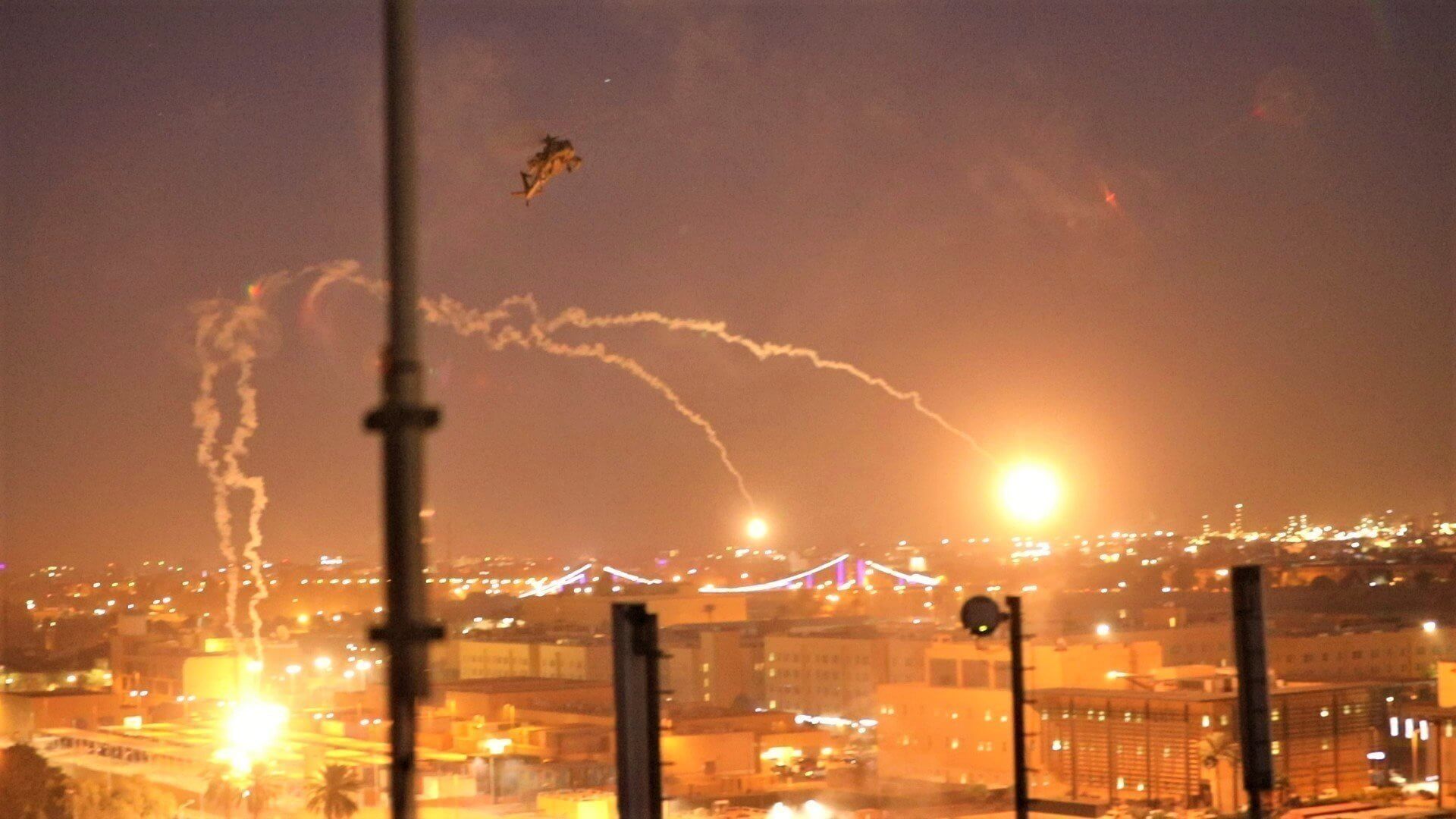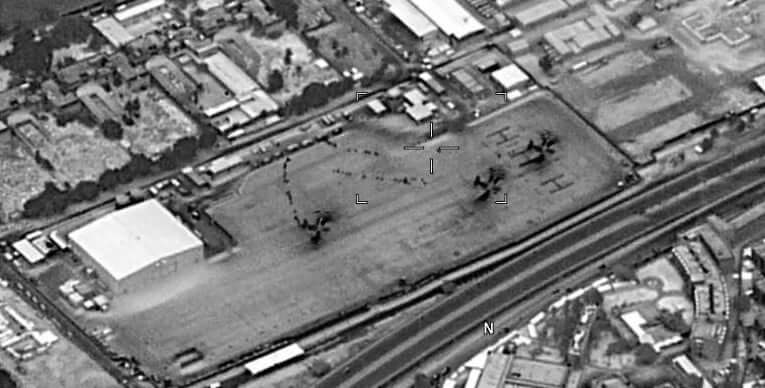When hundreds of pro-Iranian militia on Dec. 31 began an assault on the U.S. Embassy in Baghdad, U.S Army AH-64 Apache gunships almost immediately began overflights of the compound.

Besides security personnel assigned to the fortified compound, the two Apaches from 1st Battalion, 227th Aviation Regiment of the 34th Combat Aviation brigade were first on the chaotic scene “as a show of force,” according to the U.S. Defense Department. “The helicopters launched flares as a show of presence while providing additional security and deterrence against protesters.”
Videos and photos released by the Pentagon on Dec. 31 show the Apaches dispensing flares and providing continuous overwatch as the “violent rallies of members of these outside the American embassy in Baghdad resulted in damage to exterior entry facilities and buildings at the embassy compound,” Defense Secretary Mark Esper said in a statement.
On Tuesday, Esper authorized the launch of Marines from the Special Purpose Marine Air-Ground Task Force-Crisis Response-Central Command, from Kuwait to the Embassy in Baghdad.
Using MV-22 Ospreys and KC-130 aerial refueling tankers, the crisis response force specializes in reinforcing embassies under siege and tactical recovery of aircraft and personnel, or TRAP, missions.
“On Tuesday, to ensure the security of the Americans at the embassy in Baghdad, we immediately deployed Marines from Kuwait who arrived at the embassy in a matter of hours,” Esper said. “We also deployed a battalion of the 82nd Airborne Division to ensure that we can provide additional defensive support to the embassy in Baghdad or elsewhere in the region as needed.”
Forward-looking infrared video released by the Pentagon shows three MV-22s landing in the embassy courtyard and Marines streaming from their aft doors, moving in single file toward the interior of the Green Zone, as the embassy compound is called.

Special Purpose Marine Air-Ground Task Forces were created for such an event. The first 2,000-Marine unit was established and stationed in Moron, Spain, after the 2012 attack on the U.S. consulate in Benghazi, Libya. Because no amphibious ships were stationed in the Mediterranean at the time of that attack, the Marine Corps was unable to quickly reinforce the facility. Four Americans were killed in the attack.
That unfortunate event gave rise to the land-based units with the tortuous acronym SPMAGTF-CR, which would stand at the ready to perform TRAP and embassy reinforcement and/or evacuation with V-22s and KC-130 tankers. The Spain-based force is responsible for responding to crises throughout U.S. Africa Command. The Kuwait-based force covers U.S. Central Command, which includes both Iraq and Afghanistan.
Central Command’s crisis response force, the same one that flew into Baghdad, had its first mission in late 2014. It rode Ospreys to the aid of the U.S. Embassy in Yemen when political instability threatened the capital of Saana.









